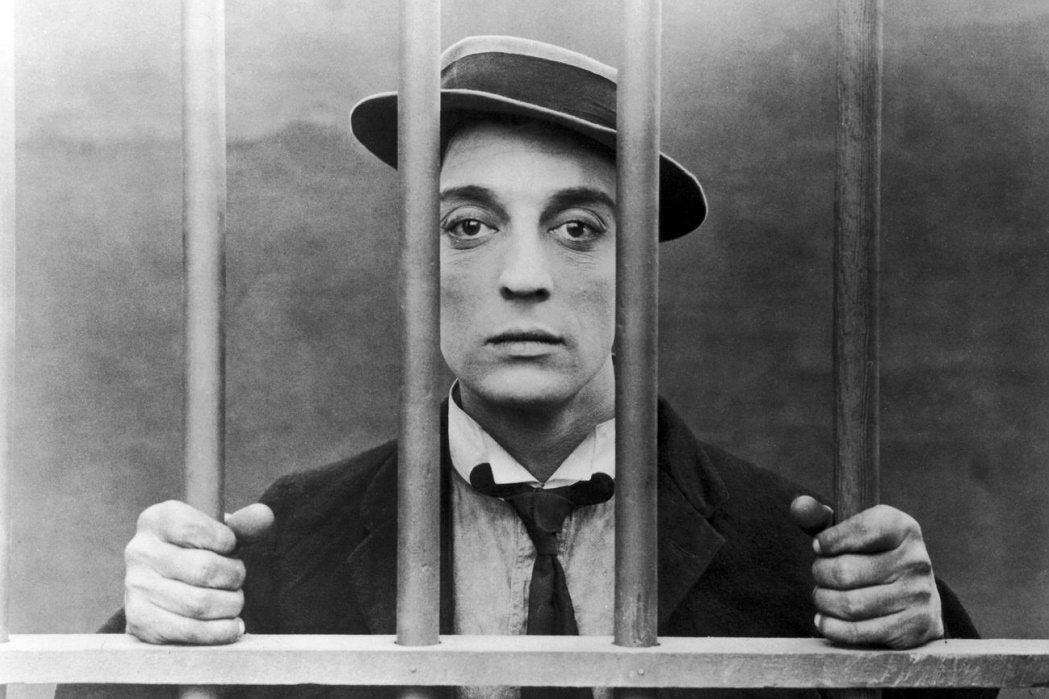In the age of silent cinema, one comedian reigned supreme—the incomparable Buster Keaton, whose physical comedy and low-key looks captured the heart of early audiences. But what made Keaton so funny? Judith Sanders and Daniel Lieberfeld find the answer in Keaton’s troubled youth.
Though Keaton himself never acknowledged the role of his past in his comedic present, write Sanders and Lieberfeld, he was able to bring elements of that biography into his performance. The son of an abusive alcoholic, Keaton himself struggled with substance abuse problems and “was able to express his hurt and anger only in cinematic disguises.”
Even his name, Buster, comes from childhood trauma: after falling down a flight of stairs, he earned the nickname, and Sanders and Lieberfeld write that by the time he was three he was forced to stand onstage with his circus performer father, clad in a miniature clown costume, so his parents could keep an eye on their accident-prone child. The comedic persona he developed was a direct result of this supervision and transgression, write Sanders and Lieberfeld, finding inspiration from “improvisations on the emotionally charged theme of a naughty boy and his enraged father.”
Though Keaton insisted that he had developed his own signature stony face, Sanders and Lieberfeld write that there is evidence that suggests his father insisted on it. He learned not to betray his delight in his physical comedy to the audience, they write, while learning another, more sobering lesson: never to betray how frightened he felt of his father. The face, write Sanders and Lieberfeld, is “the face of the boy who has been beaten, whose hurt and defensiveness are palpable, but who still dares to hope that someone might love him.”
Another of Keaton’s signatures was his fearless physical comedy, much of which was based on hair-raising stunts. These, too, “could have served psychological needs as well as artistic ones, Sanders and Lieberfeld write, noting that they could have allowed Keaton to exercise control over physical danger in a way he could not as an abused child. Sanders and Lieberfeld note that only when Keaton left the film industry due to frustration with the strictures imposed by MGM did he fall into severe alcoholism; without the “sole emotional outlet” of filmmaking, he needed another outlet instead.
Though Keaton’s childhood and subsequent adulthood could be viewed as tragic, Sanders and Lieberfield maintain that it is more than relevant to his output as an adult. “Once we take into account the reality of Keaton’s childhood,” they write, “we can trace its influence on both his marvelous creativity and his disaster-filled life, and we are no longer distanced from the powerful psychological messages that distinguish his achingly beautiful comedies.”







